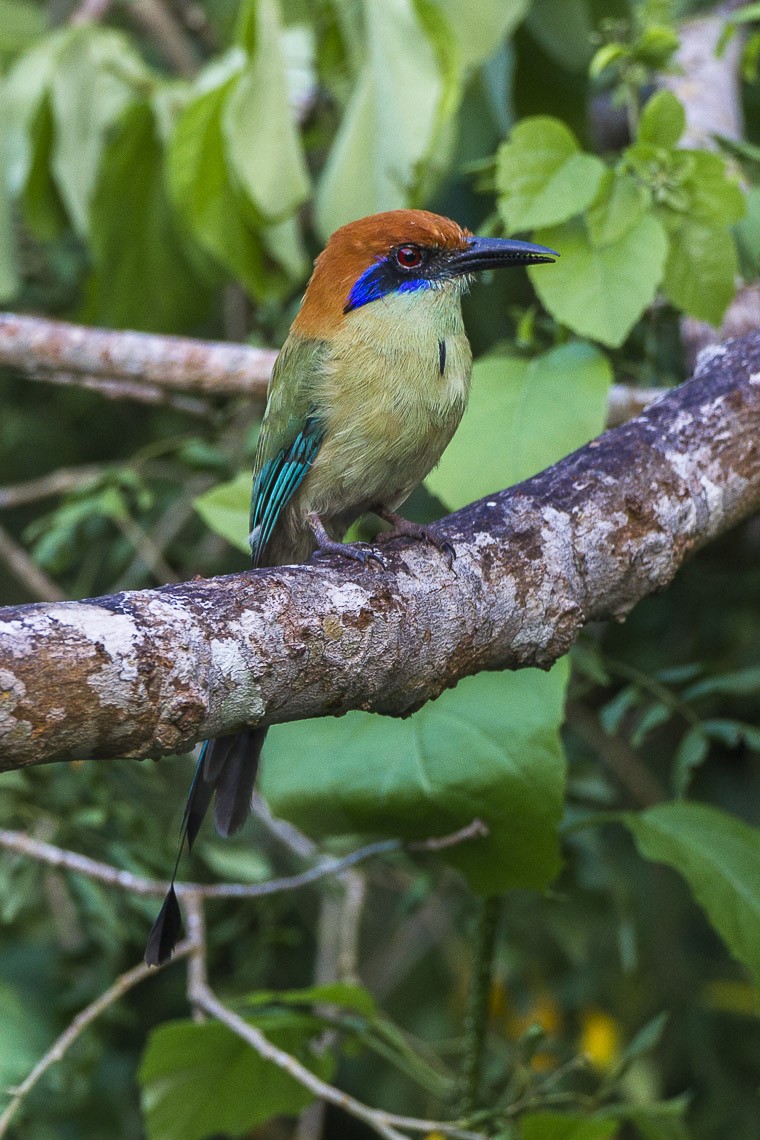Russet-crowned Motmot
A species of Blue-crowned and russet-crowned motmots Scientific name : Momotus mexicanus Genus : Blue-crowned and russet-crowned motmots
Russet-crowned Motmot, A species of Blue-crowned and russet-crowned motmots
Botanical name: Momotus mexicanus
Genus: Blue-crowned and russet-crowned motmots
Content
Description General Info
 Photo By Francesco Veronesi , used under CC-BY-SA-2.0 /Cropped and compressed from original
Photo By Francesco Veronesi , used under CC-BY-SA-2.0 /Cropped and compressed from original Description
The russet-crowned motmot (Momotus mexicanus) is a species of motmot native to north-western Mexico and central Guatemala. It is a year-round resident of the tropical and subtropical dry broadleaf forests and scrubland. The russet-crowned motmot is the most understudied species of motmot in the family Momotidae. "Russet" refers to the reddish-brown colour of the bird's head and originates from the Latin russus meaning red. 
Size
36 cm
Life Expectancy
10 years
Nest Placement
Cavity
Feeding Habits
Russet-crowned Motmot primarily consumes large insects, which it captures from the ground, foliage, or in mid-air. It may also eat small snakes, showcasing a diverse diet. Russet-crowned Motmot uses distinct foraging methods that demonstrate its hunting adaptability.
Habitat
Russet-crowned Motmot typically resides in arid to semi-arid woodlands and areas at the edge of forests. These birds prefer semi-open habitats that feature scattered trees and shrubs. They are habituated to elevation ranges extending up to 1800 meters above sea level. The presence of hedges in their habitat provides additional ecological support. Broadly, they are found in regions with tropical climates that favor their woodland and forest edge ecosystems.
Dite type
Omnivorous
General Info
Feeding Habits
Bird food type
Distribution Area
Russet-crowned motmots prefer old-growth forests with closed canopy but they are also found in secondary forests with a lot of canopy coverage. They live in dry and humid tropical forests and clearings up to 1800m in altitude. Russet-crowned motmots are found along the western coast of Mexico and in an isolated population in central Guatemala. They are common along their range. The subspecies M.m. vanrossemi can be observed in north-western Mexico in Sonora, Sinaloas and Chihuahua. M.m. mexicanus can be found from Sinaloa to Oaxaca along the west coast and M.m. saturates can be found in south-western Mexico and Guatemala. M.m. castaneiceps is an isolated population only found in the Motagua Valley of central Guatemala until recently. In 2018, the distribution of M.m. castaneiceps expanded to the Nentón valley in Huehuetenango which suggests that their range might be growing to western Guatemala. 
Species Status
Not globally threatened.